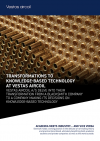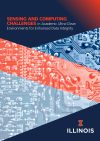Joe Kim from SolarWinds highlights how government IT professionals can locate and solve complex issues using wide-ranging insight
For government IT professionals, trying to find the root cause of IT problems can sometimes feel like running a maze. Optimistically turning each corner hoping to locate the source of the problem, only to find you’ve hit another dead end.
This is particularly the case when managing hybrid IT environments—a mix of on-premises and cloud deployments—where the source of the network’s problem could exist in the centre of several different mazes, meaning a great deal more searching for a weary government IT professional.
In a hybrid IT environment, network problems could be coming from on-premises, in complex application stacks, or they could be a part of the cloud. Without end-to-end visibility across deployments, IT professionals may be resigned to the fact that a network issue is buried too deep in the maze to be found.
This is partly an issue of resource—government IT professionals simply do not have the time to continuously monitor environments across both cloud and on-premises. What is needed is a tool that offers single-pane-of-glass visibility throughout the entire infrastructure, enabling a view straight to the centre of the maze.
A bird’s eye view
Government IT professionals now need an all-seeing eye to keep tabs on the goings-on across an increasingly complex environment. Taking in everything from virtualisation and storage, to cloud and internet providers and users, an IT professional’s view needs to be broad and expansive if they are to successfully manage a hybrid IT environment.
That said, it’s not enough to merely see what’s going on; government IT professionals need to understand it too, gaining insight into data being collected by these resources and sharing it with colleagues to enrich their organisation. This requires a method that allows IT professionals to compare data types alongside one another to easily identify the root cause of potential issues.
With the ability to look at data derived from storage performance or application performance counters, government IT professionals can identify any anomalies and remove the labyrinthine challenge of identifying network issues.
Further light can be shed on slowdowns or outages by laying timelines on top of the information derived from these applications. So, if a non-responding application sends an alert at a certain time, a government IT professional can review the data and look for warning signs around the time that the issue occurred. By sharing these dashboards with their teams, they can then get everyone on the same page and ensure that a resolution is quickly found.
Within complex applications, such as those stacked like dominoes, the ability to see events that took place during a specific timeframe and assess the impact they had on other IT resources is invaluable.
In a cloud environment, dependencies are highly dynamic. Containers can pop up and disappear, and databases can move around, which makes identifying network issues a challenge.
The ability to quickly and automatically identify dependencies and events impacting connected resources across on-premises and the cloud can reduce the time it takes to identify these issues.
Future gazing
That said, government IT professionals should not limit their view to the immediate events occurring within the hybrid IT environment. Instead, they should look for solutions that will offer them a glimpse ahead, helping them prepare for future issues.
The reactionary approach for government IT professionals is taken far too often. When something breaks, it gets fixed, rinse, and repeat. Reacting to an incident, however, is usually more time-consuming than preventing the problem from happening in the first place, while repair processes can have a serious impact on end-users’ quality of service.
Instead, government IT professionals should heed the old idiom that failing to prepare is preparing to fail, and use predictive analytics to cut any problems off before they have a chance to occur.
By collecting and analysing all of the network and systems data, government IT professionals can better predict when failures may occur and take steps to address problems before they take place. By setting up alerts based on trends, anomalous patterns, and other algorithms, IT professionals can gain insight into an event’s potential impact and be well-informed on how best to react.
Smooth operator
Ensuring a seamless user experience is a top priority for government IT professionals, and as such, keeping the network running smoothly is imperative. By discovering new ways of gaining comprehensive network and system visibility, government IT professionals can easily navigate the maze of increasingly complex hybrid IT environments.
Joe Kim
EVP
Engineering & Global CTO
SolarWinds



























